Modeling and Simulation Analysis of Speed-Regulating Valve Flow Fluctuations under Differential Pressure Steps
Abstract
:1. Introduction
2. Structure and Working Principle of Speed-Regulation Valve
3. Establishment of Mathematical Model of Speed-Regulation Valve
3.1. Flow Rate Analysis
3.2. Dynamic Balance Equation of Valve Elements
4. Simulation Analysis of Working State of Speed-Regulation Valve
4.1. AMEsim Model Building
4.2. Differential Pressure and Flow-Rate Analysis of Inlet and Outlet of Governor Valve
4.3. Influence of Differential Pressure on Flow Rate
4.4. Influence of Differential Pressure Increment Change on Flow-Rate Change
4.5. Effect of Spring Stiffness on Flow-Rate Fluctuation
4.6. Effect of Spring Preload on Flow-Rate Fluctuation
4.7. The Effect of Initial Opening of Pressure Compensator on Flow-Rate Fluctuation
4.8. Influence of Viscous Damping Coefficient on Flow-Rate Fluctuation
- (1)
- The viscous damping coefficient had no obvious effect on the flow-rate fluctuation when it increased or decreased by a small order of magnitude.
- (2)
- The initial wave peak of flow rate increased with the increase in the viscous damping coefficient.
- (3)
- After the flow and pressure difference fluctuate, the increase of viscous damping coefficient will lead to a long time to recover to the stable flow;
- (4)
- The flow-rate fluctuation increased with the increase in the viscous damping coefficient.
4.9. Flow-Rate Curve of Speed-Regulation Valve under Different Orifices
5. Conclusions
- (1)
- When the differential pressure increment was between 4 MPa and 10 MPa, the flow-rate fluctuation was the largest. When the differential pressure exceeded 10 MPa, the flow-rate fluctuation gradually became smaller.
- (2)
- The flow-rate fluctuation of the speed-regulating valve was proportional to the spring stiffness. The balance of the flow rate increased with the increase in the spring stiffness, and the spring stiffness was required to ensure the stability of the flow rate in the range of 3~12 N/mm.
- (3)
- The speed valve flow-rate peak increased with the increase in the preload, and the first flow-rate peak decreased with the increase in the preload; a reasonable preload should be guaranteed within 0.1~40 N.
- (4)
- The smaller the viscous damping coefficient of the governor valve, the more favorable it was for controlling the flow-rate fluctuation.
Author Contributions
Funding
Acknowledgments
Conflicts of Interest
References
- Jian, R.; Bin, M. 2D Digital Servo Valve. In China Mechanical Engineering Society Fluid Power Transmission and Control Branch Proceedings of the Sixth National Fluid Power Transmission and Control Conference; Machinery Industry: Lanzhou, China, 2010; pp. 84–105. [Google Scholar]
- Hai-i, Y.; Hong, J.; Ming-qian, G.; Qing-xuan, Z.; Jian-jun, Z.; Shuail, F. Mathematical Modeling and Simulation Analysis of Flow Control Valve. Chin. Hydraul. Pneum. 2019, 7, 27–32. [Google Scholar]
- Jialin, Z.; Wei, L.; Wenjian, X.; Jianwei, G. Research on Low Temperature Flow-rate Characteristic of New Pattern Proportional Speed Regulating Valve. Mach. Tool Hydraul. 2016, 44, 93–96. [Google Scholar]
- Liu, W.; Wei, J.; Hu, B. Analysis and Optimization of a Hydraulic-feedback Proportional Throttlecartridge Valve. In Proceedings of the 2013 2nd International Symposium on Quantum, Nano and Micro Technologies (ISQNM 2013), Singapore, 1–2 December 2013. [Google Scholar]
- Qing-tang, C.; Yi-jian, H.; Yi-ran, S. Fault diagnosis and analysis of speed-regulating valve based on AR trispectrum and its correlation dimension. J. Hefei Univ. Technol. Nat. Sci. 2014, 37, 1158–1163, 1181. [Google Scholar]
- Sen-lin, L.; Sheng-qing, Y.; Su-yan, W.; Bo, L. Exploring the Erosion Damage of Pollution Particles to the Throttle Valve Based on Fluent. Hydraul. Pneum. Seals 2022, 42, 30–36. [Google Scholar]
- Roger, F. Stability and Performance Analysis of a Metering Poppet Valve. Int. J. Fluid Power 2006, 7, 11–17. [Google Scholar]
- Zi-long, S.; Xiao-jun, Z.; Yi-wei, L.; Jie, Z. Flow field characteristics and optimization of non-full circumference ope n spool valve. J. Mech. Electr. Eng. 2022, 39, 317–323. [Google Scholar]
- Long, Q.; Xiaoqing, X.; Zheng, Y.; Xiaojun, Z. A New Kind of Pilot Controlled Proportional Direction Valve with Internal Flow Feedback. Chin. J. Mech. Eng. 2010, 23, 60–65. [Google Scholar]
- Wang-bo, Y.; Hong, J.; Xu-bo, Y.; Dong-ming, L. Influence of the Throttle Groove Nun aber on the Valve Spool Thermal Deformation. Hydraul. Pneum. Seals 2019, 39, 17–20. [Google Scholar]
- Jinsong, Z.; Chuanbi, Z.; Zining, Z.; Zhipeng, W.; Jing, Y. Static and Dynamic Characteristics of High speed On-off Digital Valves. China Mech. Eng. 2018, 29, 145–150, 157. [Google Scholar]
- Xingyu, J. Research on Proportional Flow Valve Controller and Dead-Time Compensation Strategy. Master’s Thesis, Taiyuan University of Technology, Taiyuan, China, 2021. [Google Scholar] [CrossRef]
- Haijuan, Z. Research on Proportional Flow Valve Characteristics Based on Digital Compensator. Master’s Thesis, Taiyuan University of Technology, Taiyuan, China, 2021. [Google Scholar] [CrossRef]
- Eriksson, B. Control Strategy for Energy Efficient Fluid Power Actuators: Tilizing Individual Metering. Licentiate Thesis, Linkoeping University, Linkoeping, Sweden, 2007. [Google Scholar]
- Shengmao, L. Research of Ultrahigh-Pressure and Large-Flow Cartridge Proportional Throttle. Bachelor’s Thesis, Zhejiang University, Hangzhou, China, 2019. [Google Scholar]
- Amirante, R.; Catalano, L.A.; Poloni, C.; Tamburrano, P. Fluid-dynamic design optimization of hydraulic proportional directional valves. Eng. Optim. 2014, 46, 1295–1314. [Google Scholar] [CrossRef]
- Meng, Q. The Design of the New Digital Direction Flow Valve and Feature Analysis. Master’s Thesis, Chongqing university, Chongqing, China, 2014. [Google Scholar]
- Zhijia, G.; Yanbin, L.; Wenbao, M. Numerical simulation of the flow characteristic of the giant magnetostrictive-driven flow valve. J. Chongqing Univ. Posts Telecommun. Nat. Sci. Ed. 2012, 24, 512–517. [Google Scholar]
- Guoping, L.; Wuxing, X.; Ronghua, H.; Dawei, Q. Mathematic Modelling and Simulation of a Two-way Electro-hydraulic Proportional Flow Valve. Mach. Tool Hydraul. 2013, 41, 179–181. [Google Scholar]
- Min, C.; Bing, X.; Jun-hui, Z.; Ru-qi, D. Valve-based compensation for controllability improvement of the energy-saving electrohydraulic flow matching system. J. Zhejiang Univ.-Sci. A Appl. Phys. Eng. 2017, 18, 430–442. [Google Scholar]
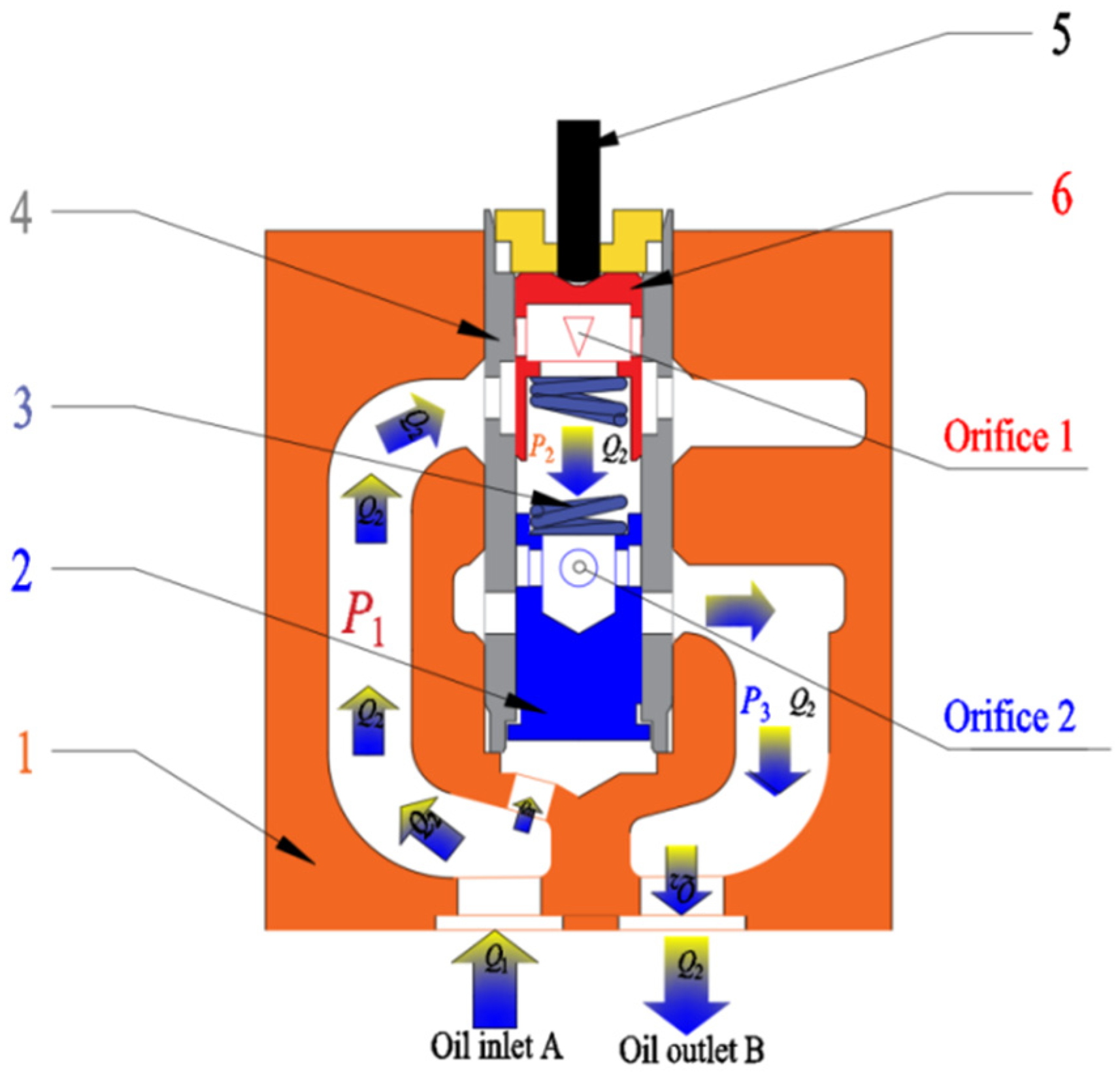

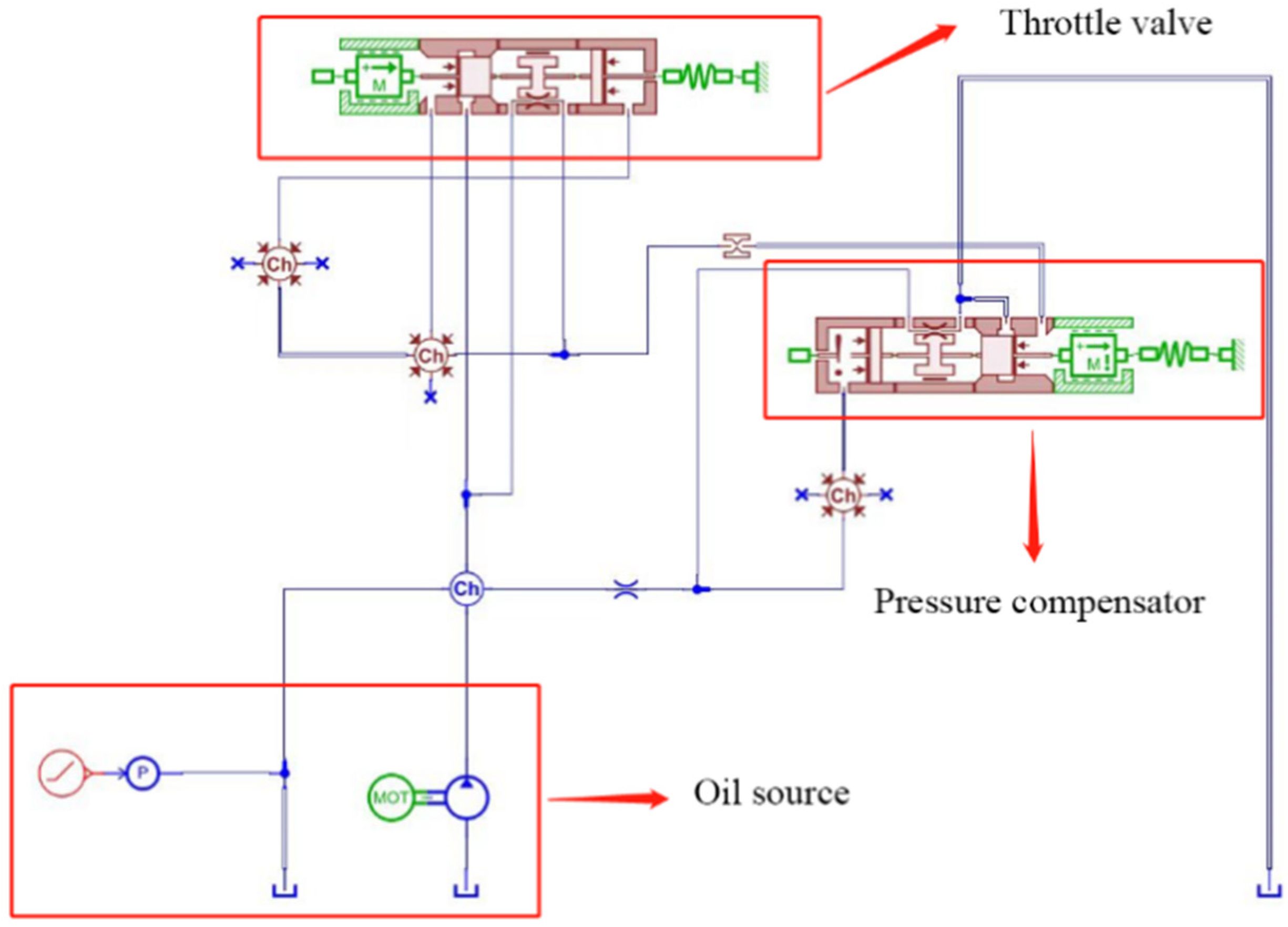

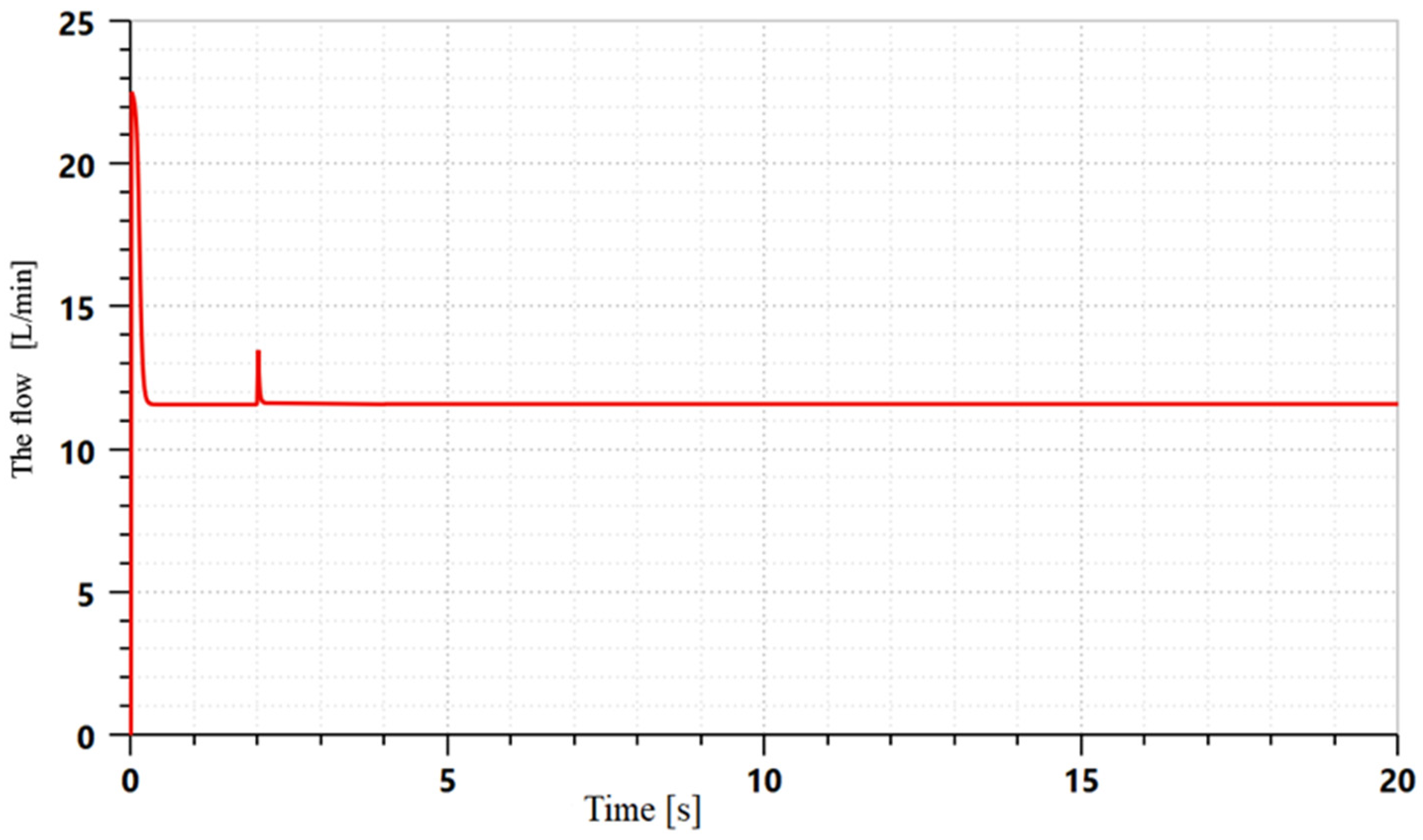
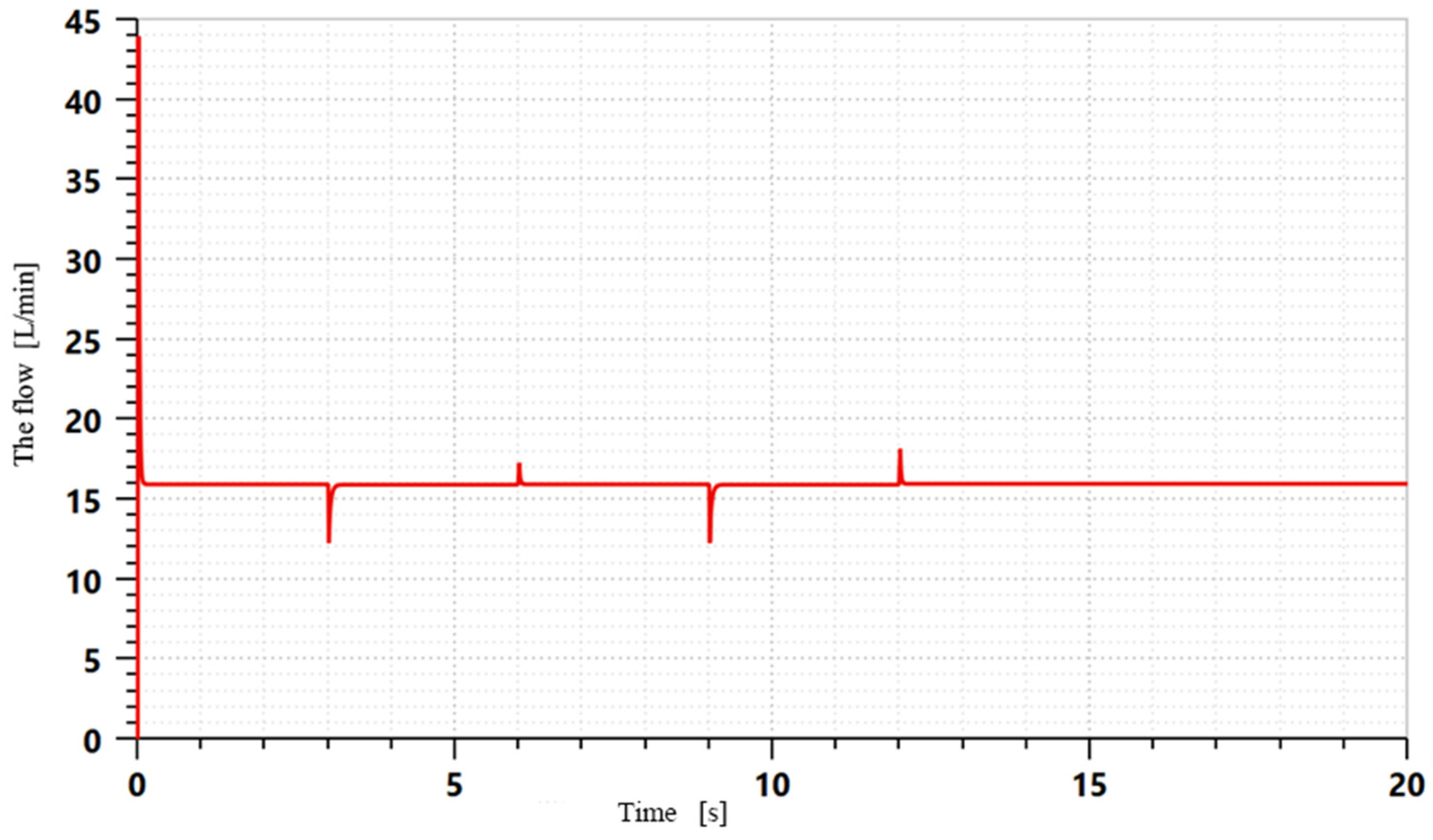
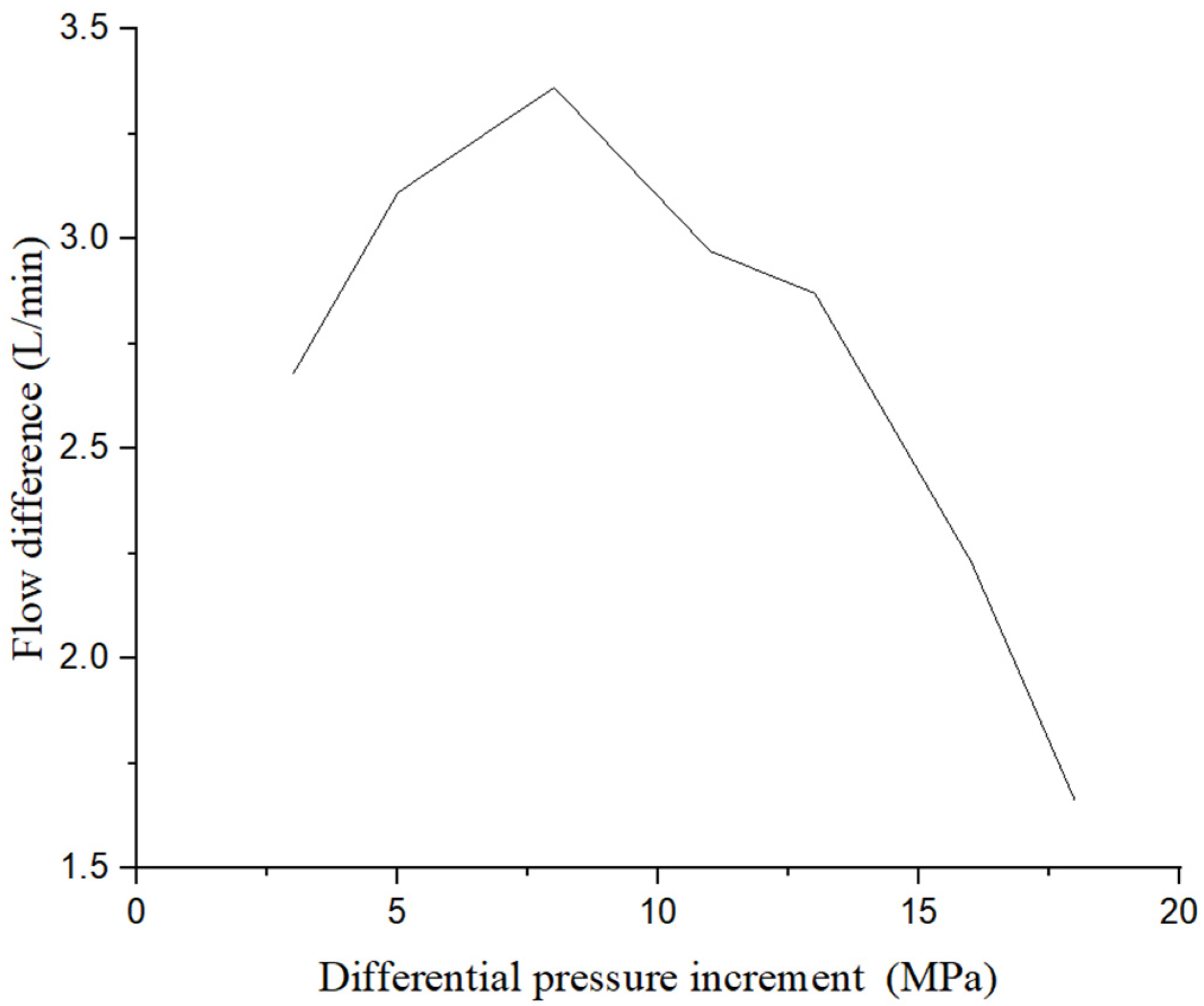



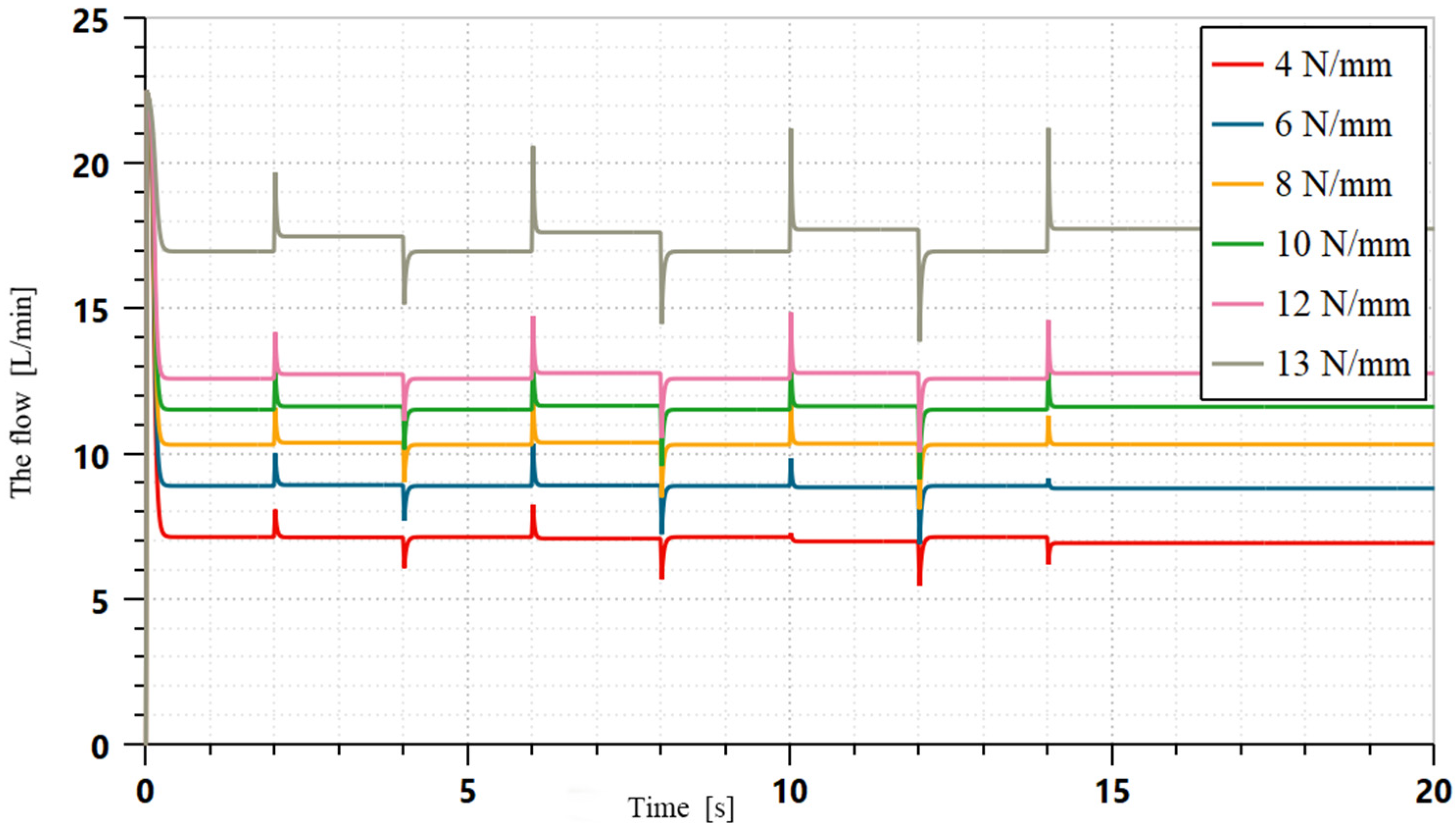
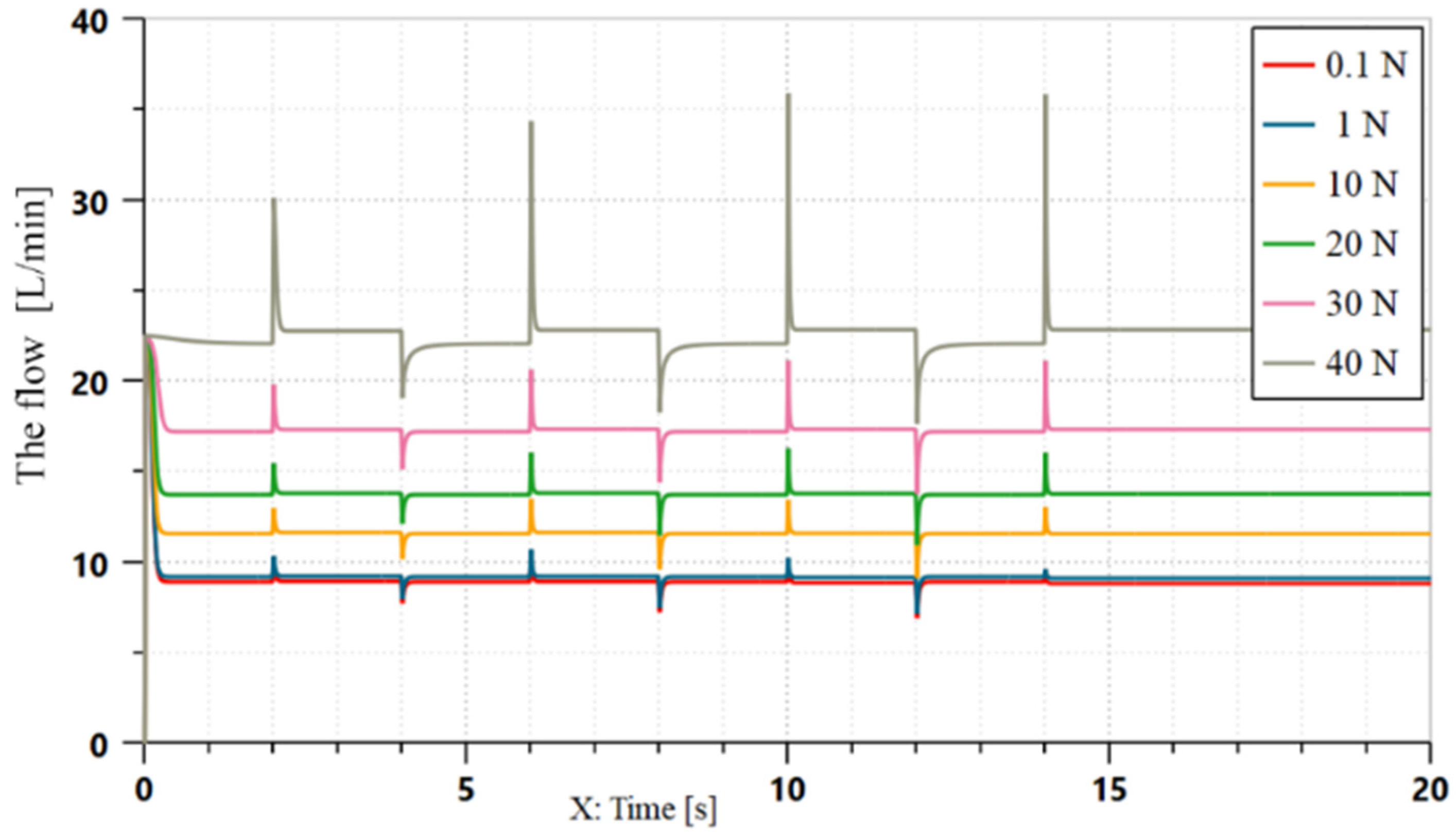

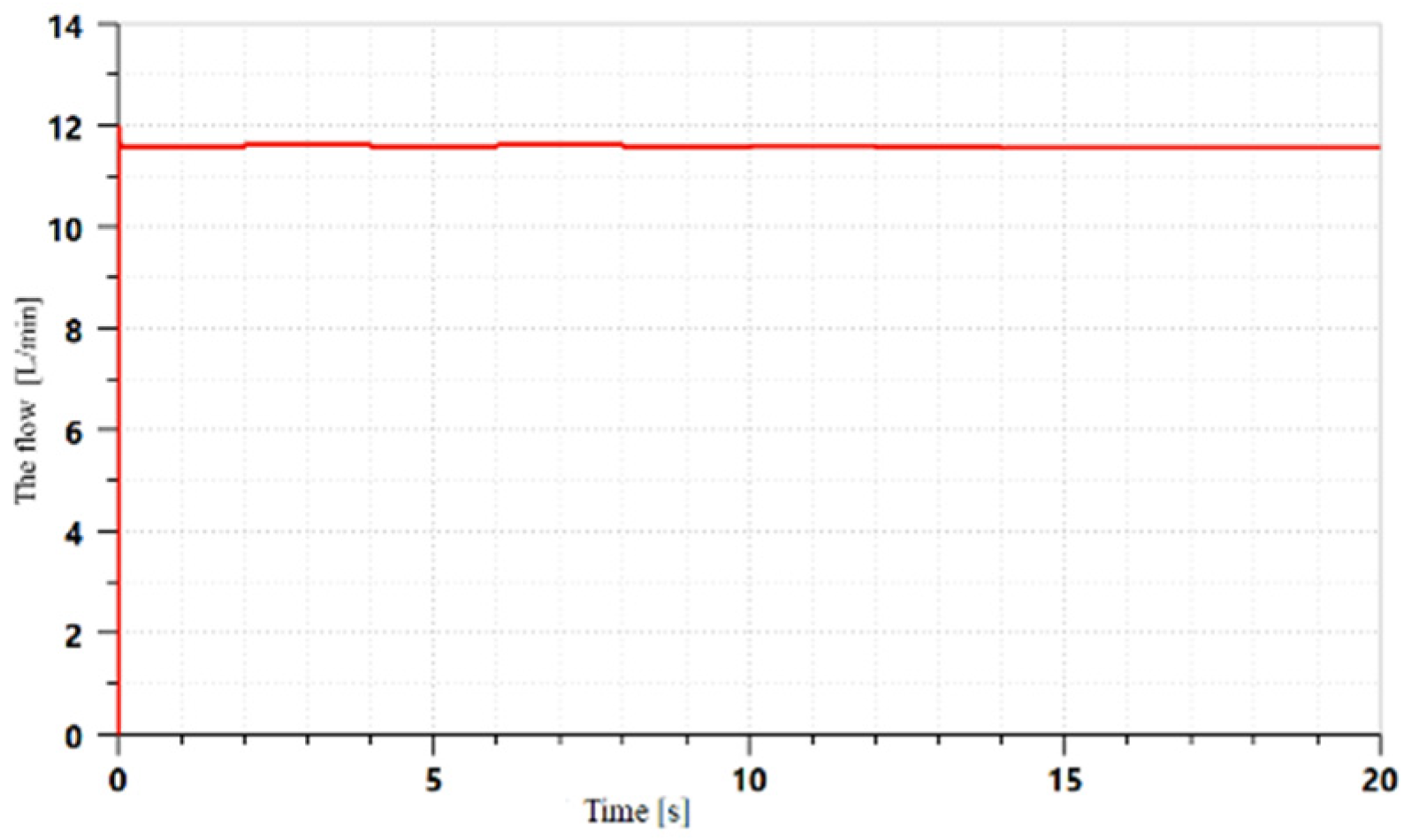
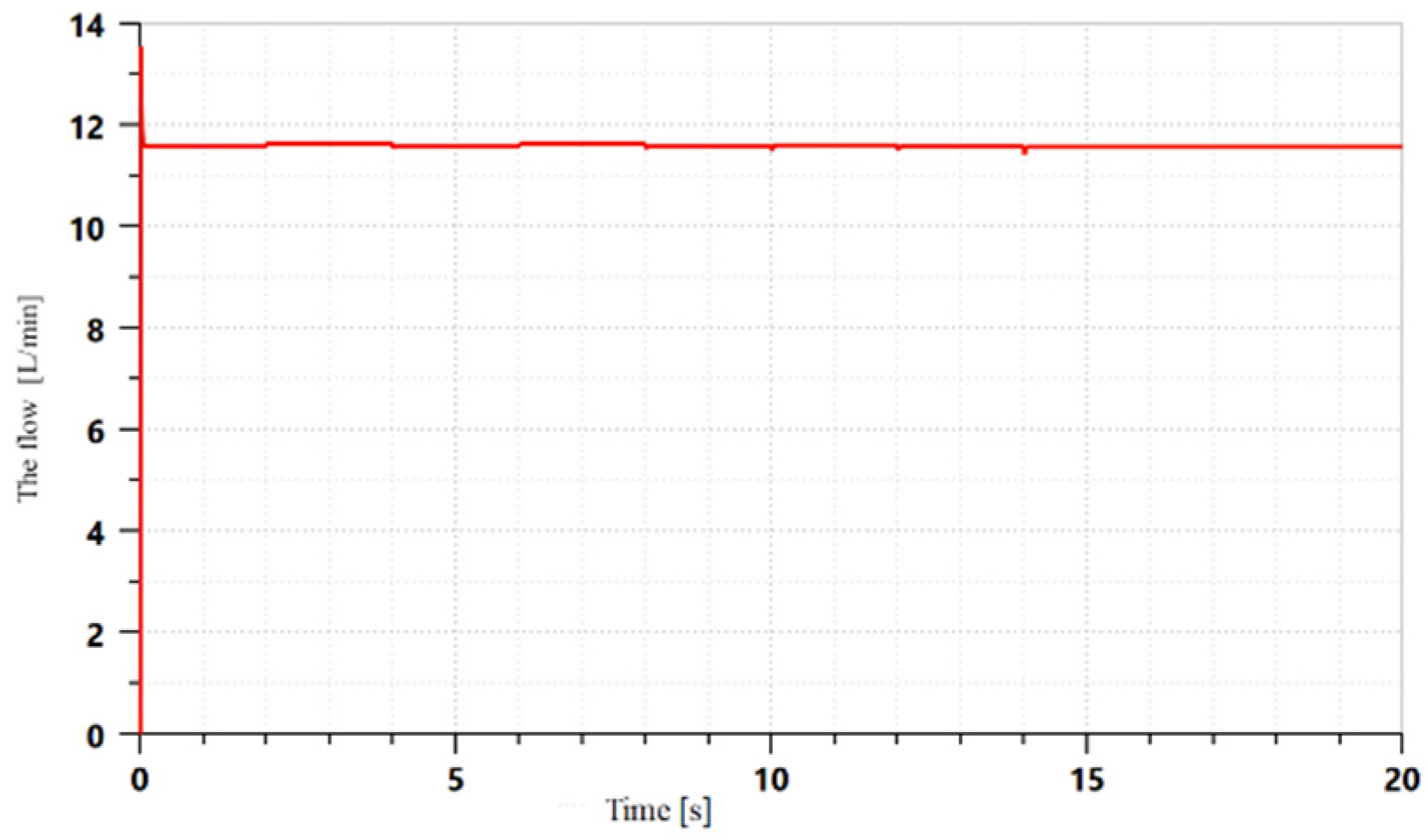


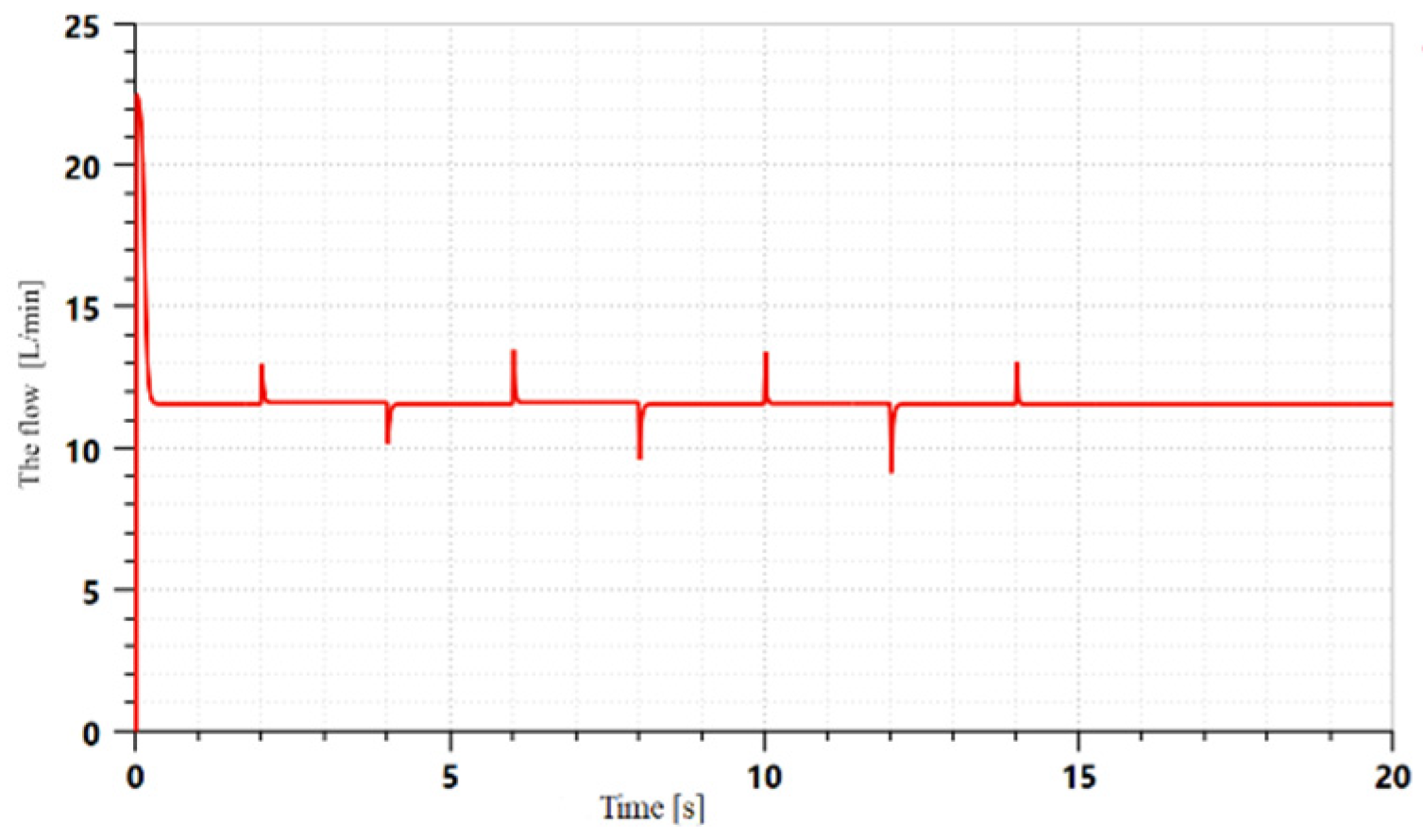
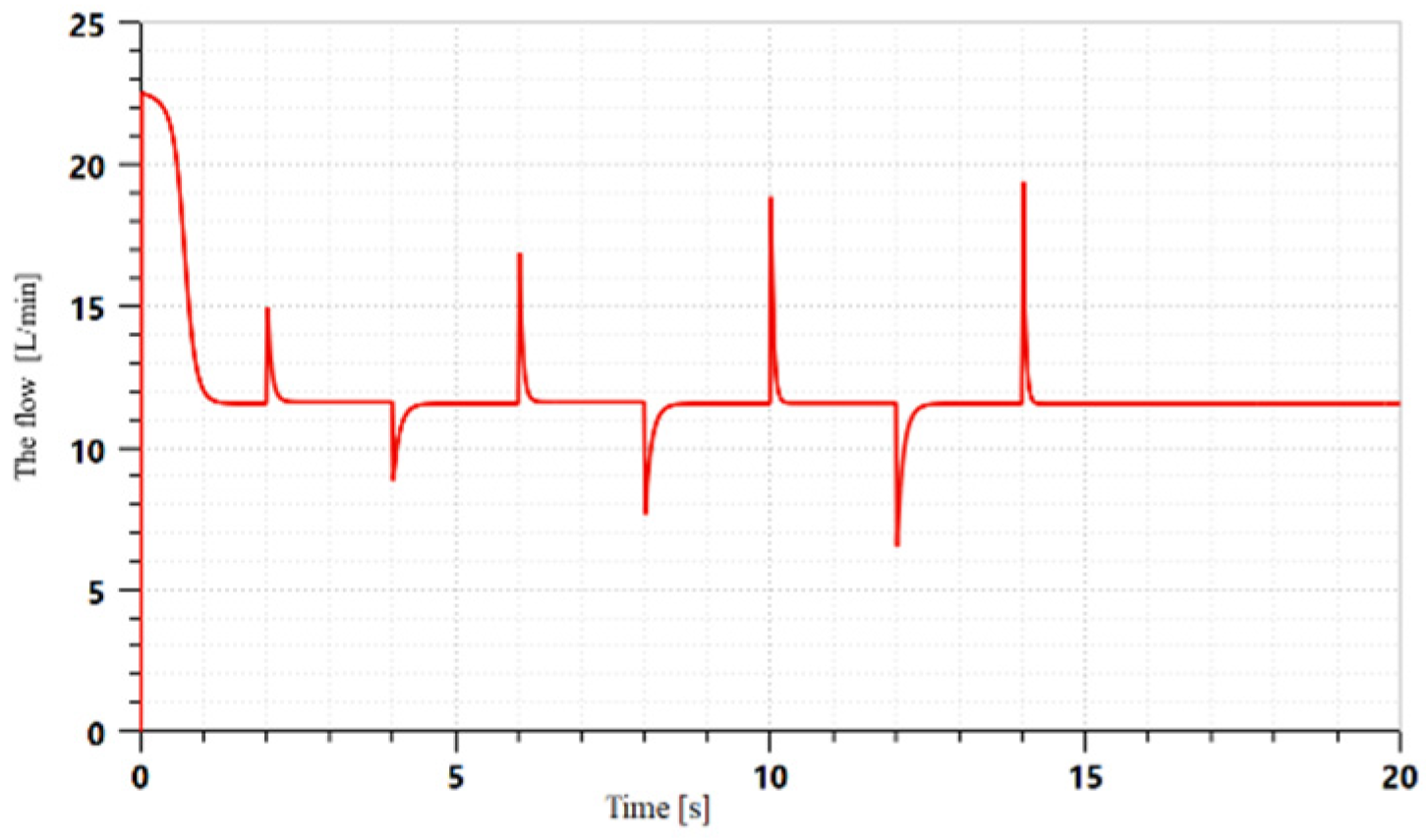
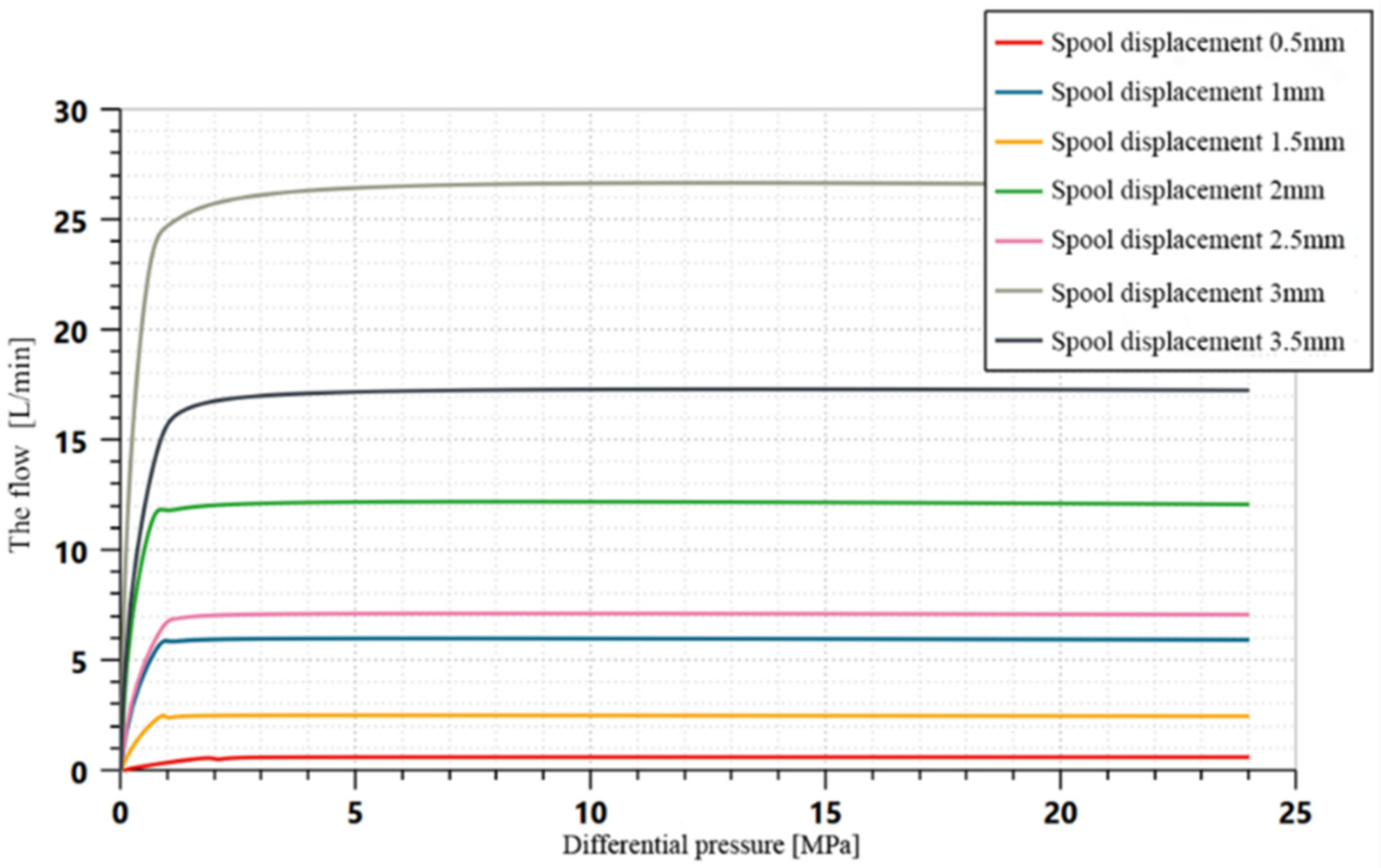
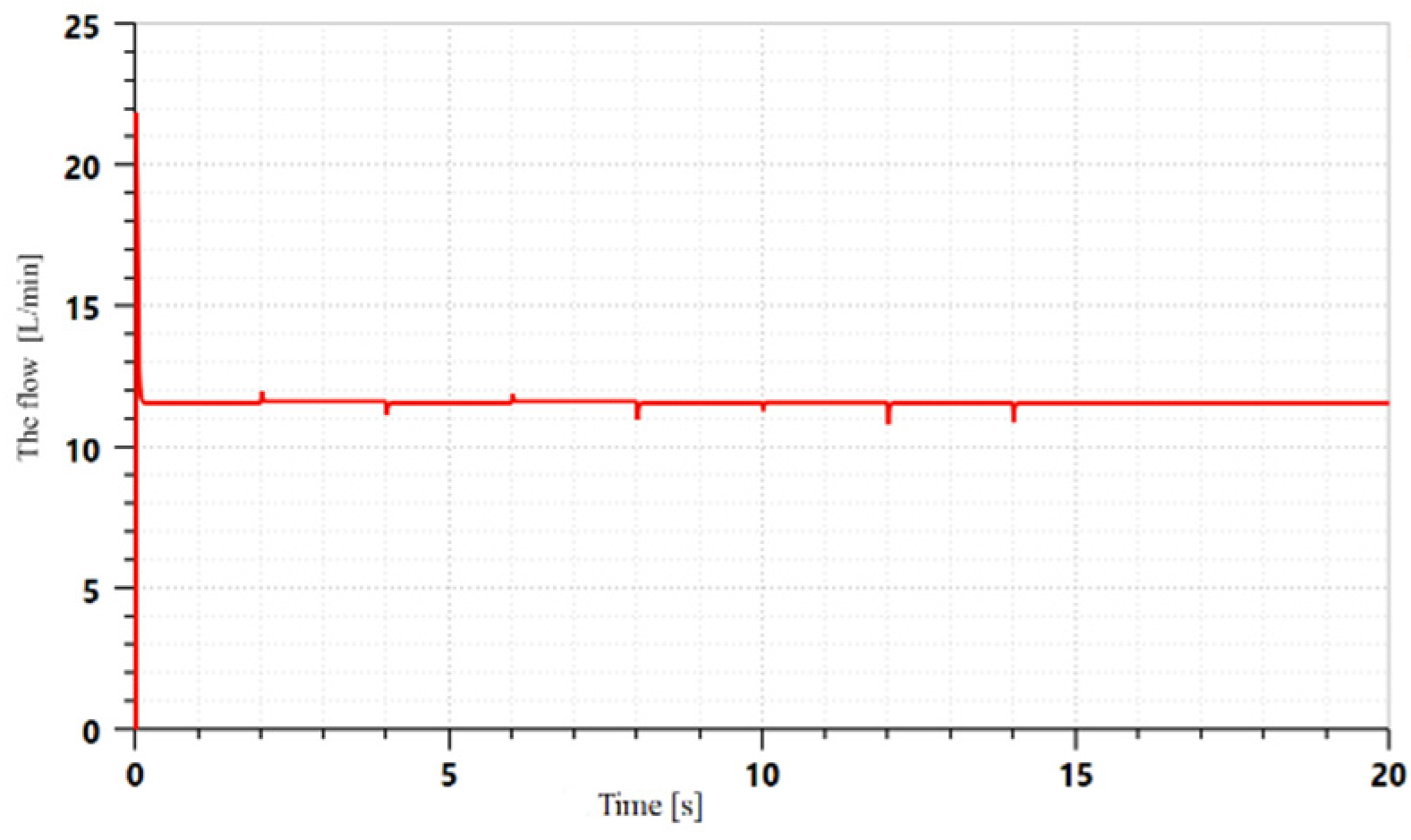
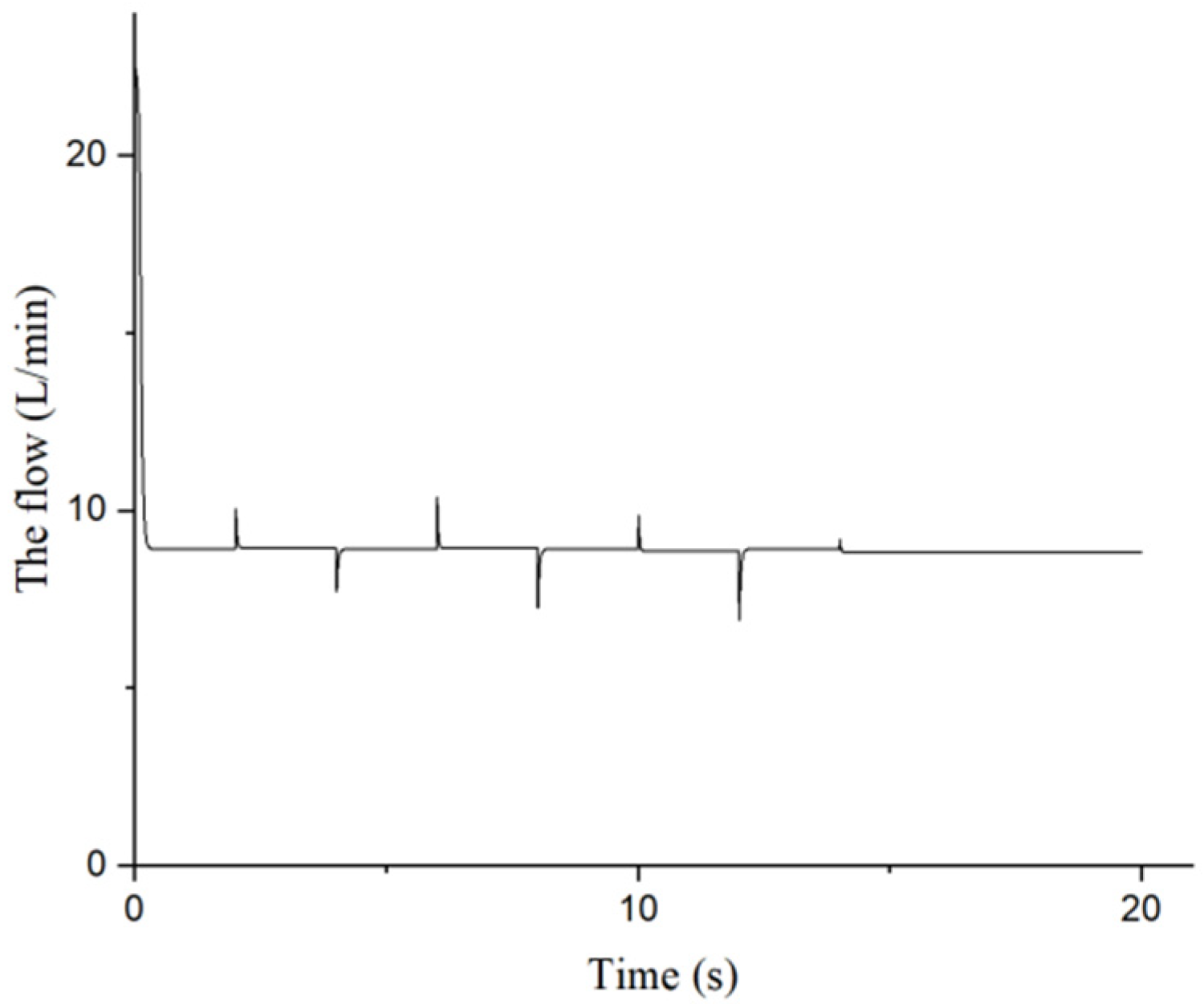
| Items | Value |
|---|---|
| Inlet diameter of speed-regulation valve mm | 8 |
| Inlet passage diameter mm | 8 |
| Diameter at throttling port of valve sleeve mm | 7 |
| Valve set inside diameter mm | 12 |
| Diameter of valve sleeve pressure compensator mm | 4 |
| Spring stiffness N/mm | 16.9 |
| Stress area at oil inlet of pressure compensator mm2 | 145.19 |
| Diameter of oil inlet hole in pressure compensation chamber mm2 | 4 |
| Speed-regulation valve outlet diameter mm | 8 |
| Differential increment MPa | 3 | 5 | 8 | 11 | 13 | 16 | 18 |
| Flow-rate difference value L/min | 2.68 | 3.11 | 3.36 | 2.97 | 2.87 | 2.23 | 1.66 |
| The Parameter Name | Spring Stiffness | Spring Preload | Initial Opening of Pressure Compensator | Viscous Damping Coefficient |
|---|---|---|---|---|
| Set parameters | 6 N/mm | 10 N | 2 mm | 1000 N/(m·s) |
Publisher’s Note: MDPI stays neutral with regard to jurisdictional claims in published maps and institutional affiliations. |
© 2022 by the authors. Licensee MDPI, Basel, Switzerland. This article is an open access article distributed under the terms and conditions of the Creative Commons Attribution (CC BY) license (https://creativecommons.org/licenses/by/4.0/).
Share and Cite
Li, J.; Zhang, Q.; Zhang, Y.; Peng, C.; Yang, Y. Modeling and Simulation Analysis of Speed-Regulating Valve Flow Fluctuations under Differential Pressure Steps. Electronics 2022, 11, 2580. https://doi.org/10.3390/electronics11162580
Li J, Zhang Q, Zhang Y, Peng C, Yang Y. Modeling and Simulation Analysis of Speed-Regulating Valve Flow Fluctuations under Differential Pressure Steps. Electronics. 2022; 11(16):2580. https://doi.org/10.3390/electronics11162580
Chicago/Turabian StyleLi, Jianying, Qizheng Zhang, Yang Zhang, Chen Peng, and Yu Yang. 2022. "Modeling and Simulation Analysis of Speed-Regulating Valve Flow Fluctuations under Differential Pressure Steps" Electronics 11, no. 16: 2580. https://doi.org/10.3390/electronics11162580






